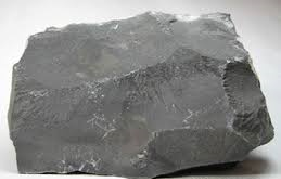GEOMORPHIC FEATURES PRODUCED DUE TO -- WIND ACTION
 |
| WIND ACTION |
Wind-activity is obvious in semi-bone-dry and parched districts, yet it is especially solid in deserts. Aeolian geography is made by the land group of wind, which can helpfully be partitioned into the accompanying three phases:
(a) Erosion, (b) Transportation, (c) Deposition.
(a) Erosion:

WIND EROTION

The breeze achieves disintegration by three methods:
(I) Deflation. (ii) Abrasion. (iii) Attrition.
(I) Deflation:
Emptying is the procedure of evacuation of free soil or shakes particles, along the course of the blowing wind. This procedure sedatives well in dry areas with practically no precipitation.
(ii) Abrasion:
The scraped area is the sand shoot activity of twist with sand against the stones. The free particles that are passed up
 |
| WIND ABRASION |
(iii) Attrition:
Wearing down is the pounding activity. While on travel wind conceived particles regularly slam into each other. Such common crash achieves a further crushing of the particles.
Critical Erosional Features and Associated Landforms -
Because of emptying, when the free particles are cleared away, just the hard mantle is abandoned which is known as Hamada.
(ii) Yardang:
A scored or wrinkled topographic shape delivered by wind scraped area, which is extended toward winning breezes and is typically firmly undercut, is known as Yardang.
 |
| YARDANG |
A wide shake top remaining on a slim shake section, delivered in view of the breeze scraped spot, is known as a platform shake.
(iv) Ventifacts:
These are rocks faceted by the grating impacts of wind-blown sand. Ventifacts with one smooth surface is called Einkanters and with three smooth faces as Dreikanter; when just two scraped faces are abandoned, it is called zweikanter.
 |
| VENTIFACTS |
(v) Mushroom-table:
It is an unthinkable mass of progressively safe shake laying on under-cut mainstays of milder material. They are frequently lengthened toward the predominant breeze and are otherwise called 'Zeugen'.
 |
| MUSHRM TABLE |
The breeze fills in as apparatuses of obliteration and when they proceed onward some stone surface they achieve a scratching of the surface.
(vi) Honey-brush structure:
Rocks comprising of hard and delicate parts get differential scraped spot and the subsequent element is known as a honeycomb structure.
(v) Blow-outs:
These are wide shallow collapses slopes, wide shallow despondency in deserts.
(vii) Desert asphalt:
It is comprised of a layer of leftover rocks and cobbles strewn upon the surface while mediating better particles have been expelled because of flattening.
(viii) Millet-seed sands:
These are adjusted desert sand grains, came about through the procedure of wearing down and have likeness with millet seed grains.
(b) Transportation:
Wind-transportation is absolutely subject to wind-speed. There are three strategies for wind-transportation:
(I) Traction:
Where particles are evacuated through rolling and crawling.
(ii) Saltation:
Here the particles, which are too substantial to even think about remaining in suspension and lighter to be transported in footing, are transported through a progression of bobs.
(iii) Suspension:
(c) Deposition:
Wind-framed stores are called aeolian stores. The wind is a brilliant specialist for arranging of materials according to their size, shape or weight. Stones and rocks can't be diverted and are left back to frame slack stores. The clayey and salty divisions are stored as loess, which does not demonstrate any stratification. Wind stores accept two general structures as:
(I) Sheets, (ii) Piles.
'Sheet stores' are the residue stores set down on the substantial region. 'Heaps stores' incorporate the different sorts of rises which aggregate from sand and residue conveyed in welcome.
Depositional Features:
(I) Sand slope:
Hills of sand whose surface is sporadic is called sand slope.
(ii) Sandhill:
At the point when the hill is as a round hillock or an edge with a peak, it is known as a sand ridge. In structure, a rise has a delicate slant towards the breeze ward side and a lofty face towards the lee-side. The state of a hill is controlled by
(a) the measure of sand supply,
(a) wind-speed,
(c) the steadiness of wind heading, and
(d) sum and dissemination of vegetative cover.
Kinds of Sand-Dune :
(I) Barchan:
Barchan is the crescentic formed ridges with the focuses or wings coordinated downwind.
 |
| BARCHAN |
(ii) Seif:
It is like barchans aside from one wing is missing, caused by an infrequent move in wind course.
(iii) Transverse ridge:
Extended hills frame at right points to the overall breeze.
(iv) Fore rise:
Edge like stores of wind-borne sand framed along the bank of ocean or lakes.
(v) Longitudinal rise:
Lengthened edges of sand found to lie parallel to the course of blowing wind.
(vi) Parabolic rise:
These are of allegorical shape, their horns point towards the course inverse to that of the blowing wind.
(vii) Whaleback hill:
It is an expansive longitudinal rise with level tops, on which barchans or serifs may happen.
The spaces between the hills is called 'Gassis' and the water which is accessible in shallow wells and bolster vegetation in desert zones, frame what is known as 'Desert garden'.



0 Comments